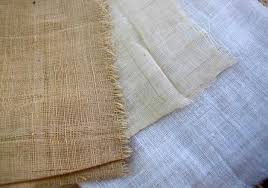The once-coarse texture is on the runway and in chic wardrobes, yet it is still consistent with its underlying foundations
Pannu in one of creator Purvi Doshi’s manifestations. Khadi falls and window hangings wonderfully, making it ideal for long flowy outfits, for example, saris, Kurtis, skirts, and long shrugs.
A DECADE OF KHADI IN THE MOVIES
It’s one thing for Kasturba Gandhi to wear it in a retelling of the Mahatma’s life, yet the new khadi — with a string tally of 500, up from a unique string tally of 60 — is highlighting in scenes of marvelousness, sentiment and brave as well. A portion of the outfits for Kangana Ranaut in Manikarnika (2019), structured by Neeta Lulla, were made in khadi sourced from the administration run Khadi and Village Industries Commission, just as from neighborhood craftsmans in Uttar Pradesh, Rajasthan and Maharashtra Anju Modi utilized khadi for the dhotis and samurai skirts worn by Ranveer Singh as he played the Maratha peshwa Baji Rao, in the recorded epic, Bajirao Mastani (2015) Sabyasachi Mukherjee dressed Aishwarya Rai Bachchan in khadi in the movies Guzaarish (2010), a dramatization where she played an exquisitely dressed Christian medical caretaker and wore a ton of khadi dresses, and Raavan (2010), a present day reconsidering of The Ramayana, where Rai played the stole spouse of a cop and blew some people’s minds in khadi anarkalis.
Vidya Balan, additionally styled by Sabyasachi Mukherjee, wore hearty, soaked khadi saris and shirts in the film Paa (2009). Mahatma Gandhi turning khadi on a charkha may have been a symbol of the Swadeshi development, yet the texture is not, at this point the unassuming, coarse, dull-beige sack-material of the history books. It’s intense, splendid, delicate and sans wrinkle. What’s more, in these new weaves, it’s advanced toward runways in India and past, just as to wedding trousseaus, red floor coverings and film sets.
In 1918, when Gandhi began his khadi development, the material was emblematic of confidence, self-administration, gravity and national pride. It was intended to be hand-spun in a free weave; the little mistakes and harsh feel were a piece of its character. In these new weaves, Khadi’s advanced toward runways in India and passed through architects like Anju Modi (center), just as to wedding trousseaus, red floor coverings and film sets. The khadi development was a dissent against the British material industry that paid insignificant rates to Indian ranchers for crude material developed here; at that point prepared that crude material either in Britain or in British-claimed units that came up short on laborers. The material was in the long run sold in nearby markets at ordinarily its genuine expense — with the incomes quickly lively away abroad. The present khadi is become here, woven here, styled and worn here as well, and it mirrors a cutting-edge India glad for its legacy and its place on the planet. Think splendid hues, flowy outlines, combination assortments that blend east and west.
understand more
Navratri 2019: Here’s the means by which you can add contemporary loot to your customary outfits .”Khadi has discovered its way into nearly everything — coats, palazzo pants, crops tops, sarongs and even pants,” says creator Purvi Doshi who has been exploring different avenues regarding the texture for her eponymous economical style name, for a long time. “I love working with tufts and mirror work to give contemporary cuts and outlines a decent customary feel.”
The texture has made a specific rebound over the previous decade. “The chain of Khadi Udyog Bhavan stores was given a redo by the focal government and architects were urged to explore different avenues regarding better approaches to utilize the handloom,” says fashioner Anju Modi. Not long before the national patch up, in 2007, Modi introduced her first khadi Sufi Anarkali assortment at the Hyères design celebration in Paris. “It was a moment hit since everybody cherished the crude feel of the texture,” she says. “Top quality delicate khadi with a high string tally of 500 for every inch [the unique khadi had a string tally of 60] is really an extravagance item that takes a few man days to make, and can cost Rs 1,000 a meter.”
This sort of khadi falls and window hangings wonderfully, making it ideal for saris, Kurtis, skirts and tops. “It additionally effectively absorbs regular colors well indeed, letting you play with hues,” says Doshi. Generally significant, for the cutting-edge regular client, is its breathability. “It’s flexible and simple on the skin particularly for a nation with a moist, tropical atmosphere,” Modi says. get inventive with surfaces when taking a shot at handloom materials, says planner Anavila Misra. From Anavila’s Spring Summer ’19 assortment, Sapa.
Recent college grads have likewise taken to the texture in view of its low carbon impression. “Materials made by hand likewise have monstrous opportunities for advancement, since you get the chance to play with surfaces and can make something new at each progression,” says fashioner Anavila Misra, of the brand Anavila, which utilizes both cotton and silk khadi in its saris and dresses.

